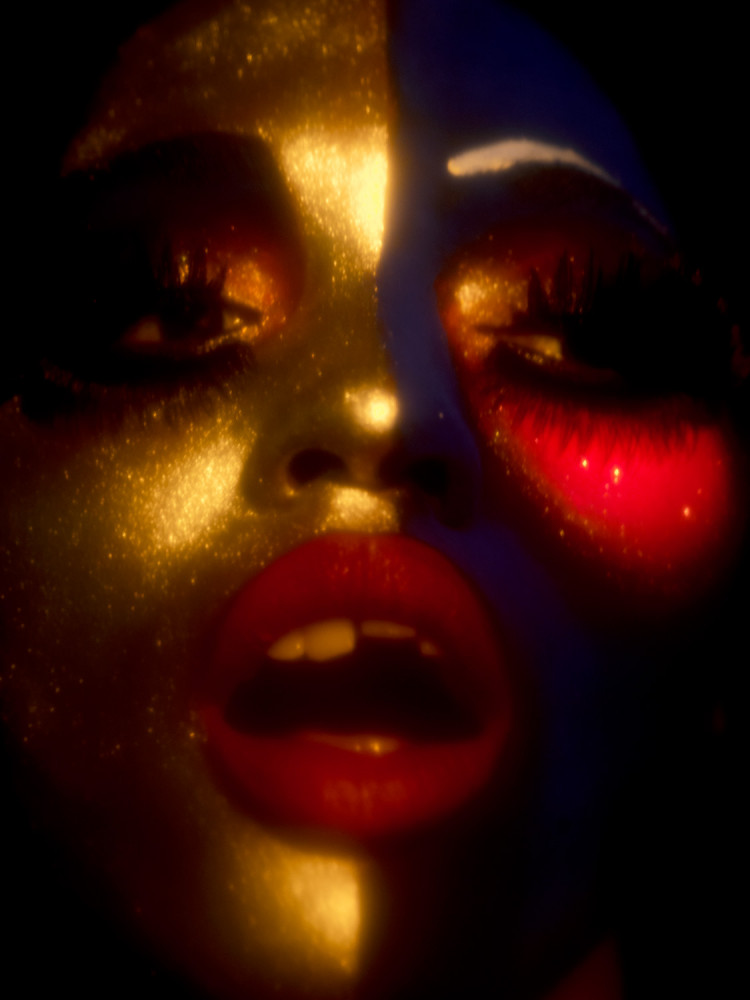
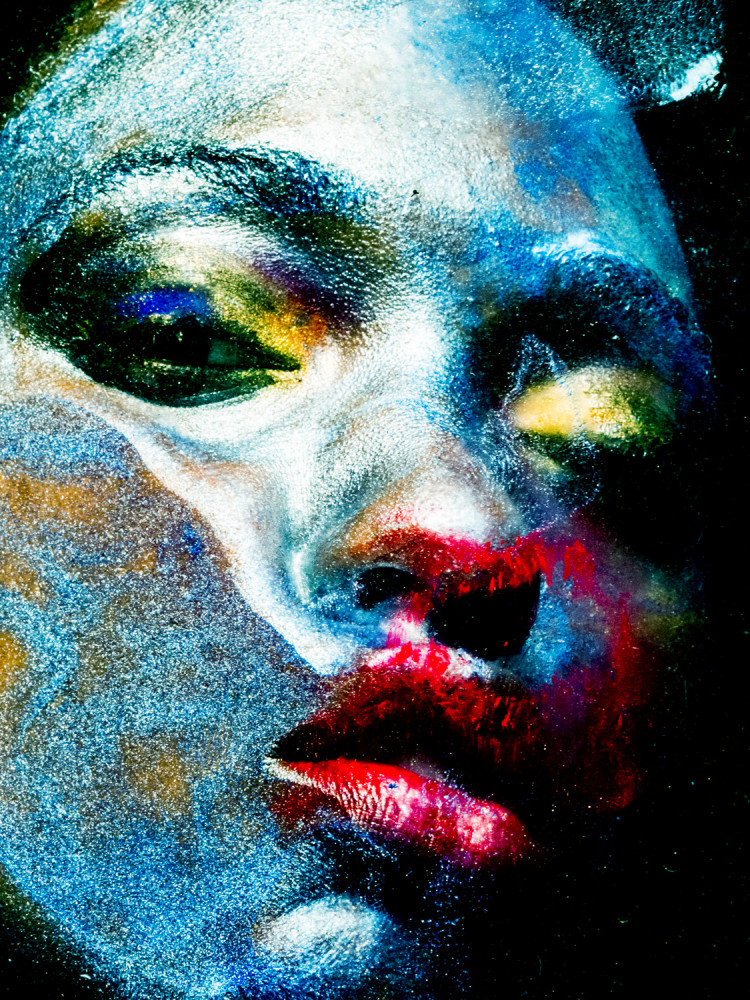
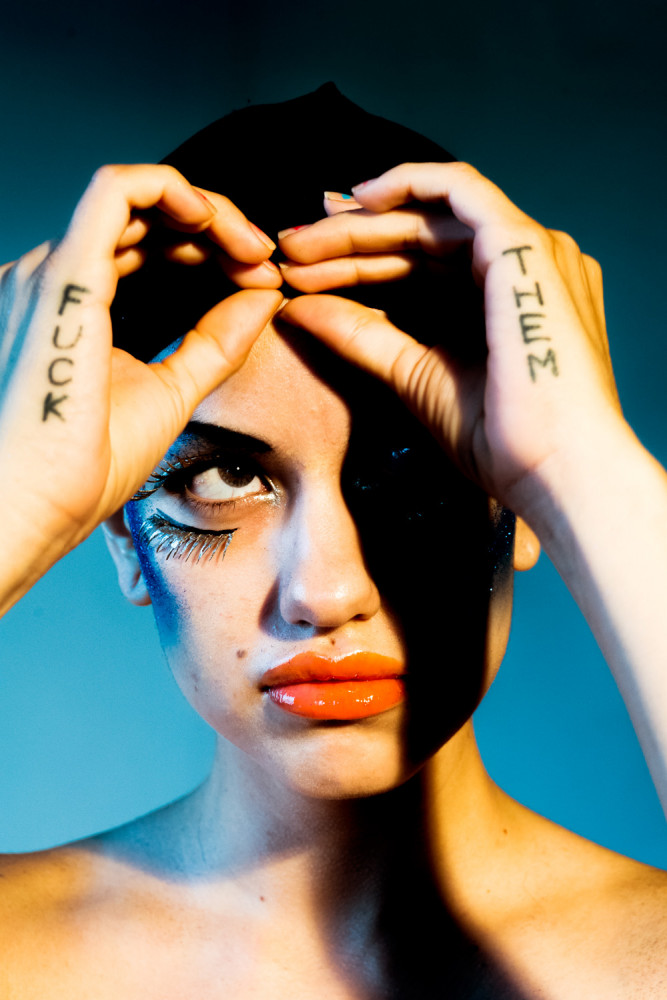
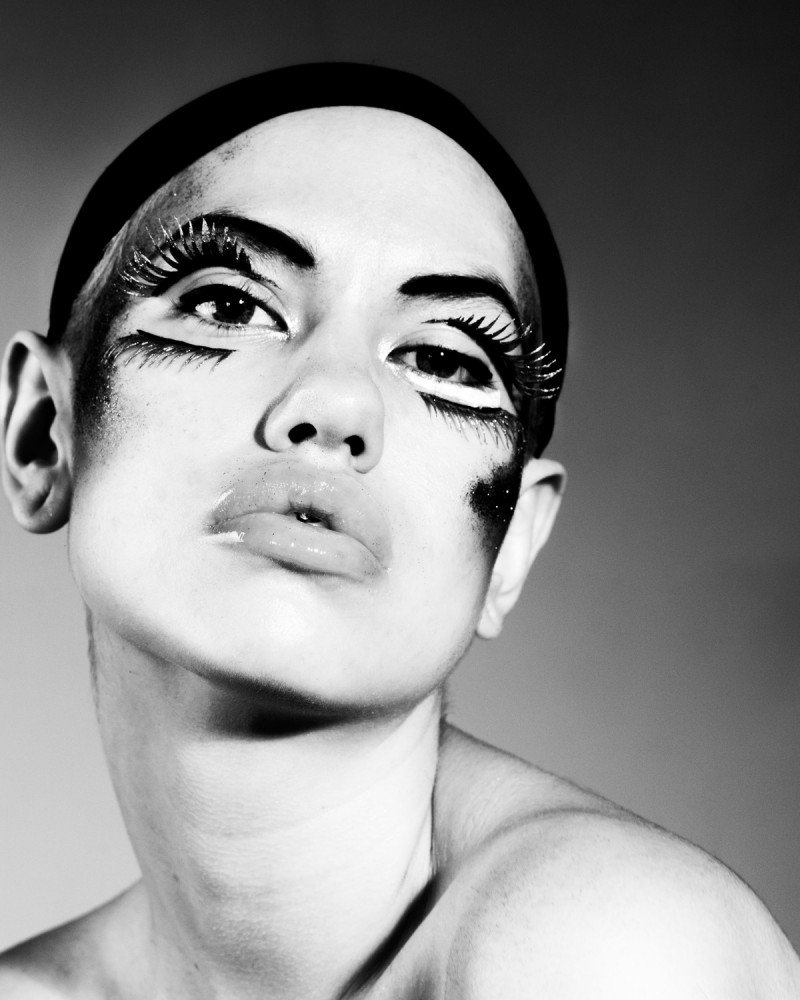
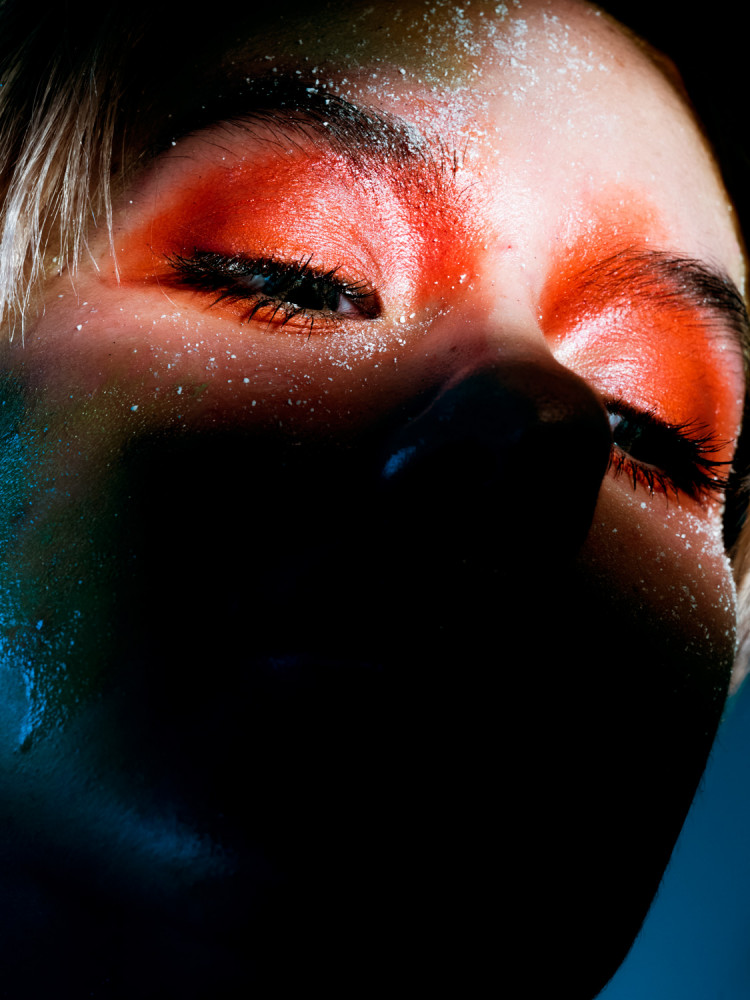
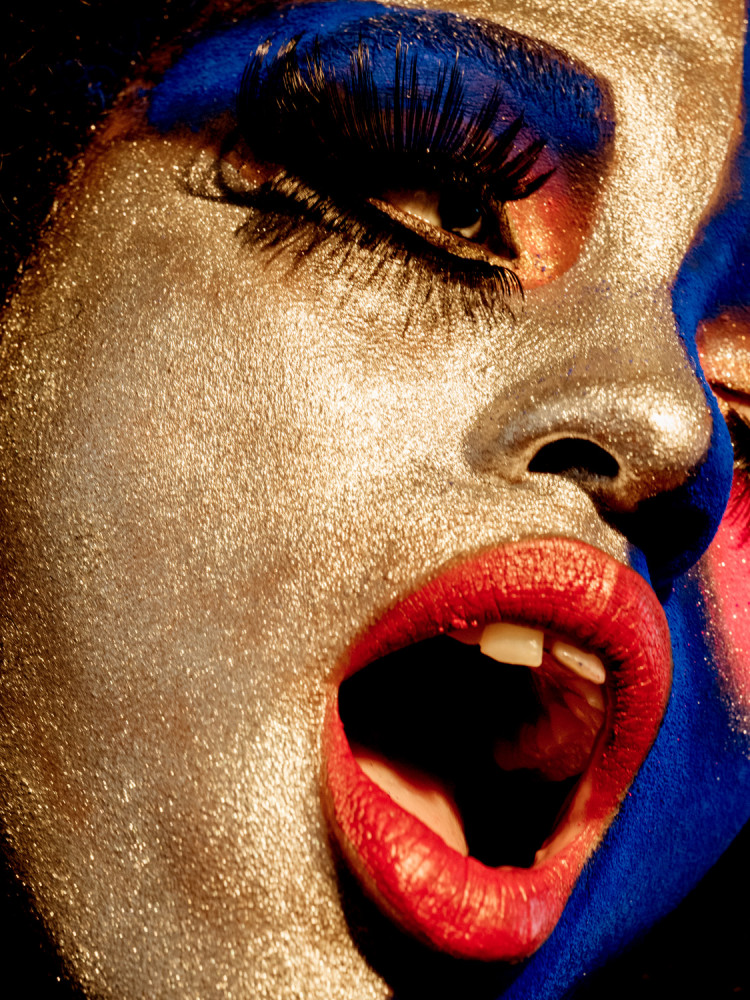
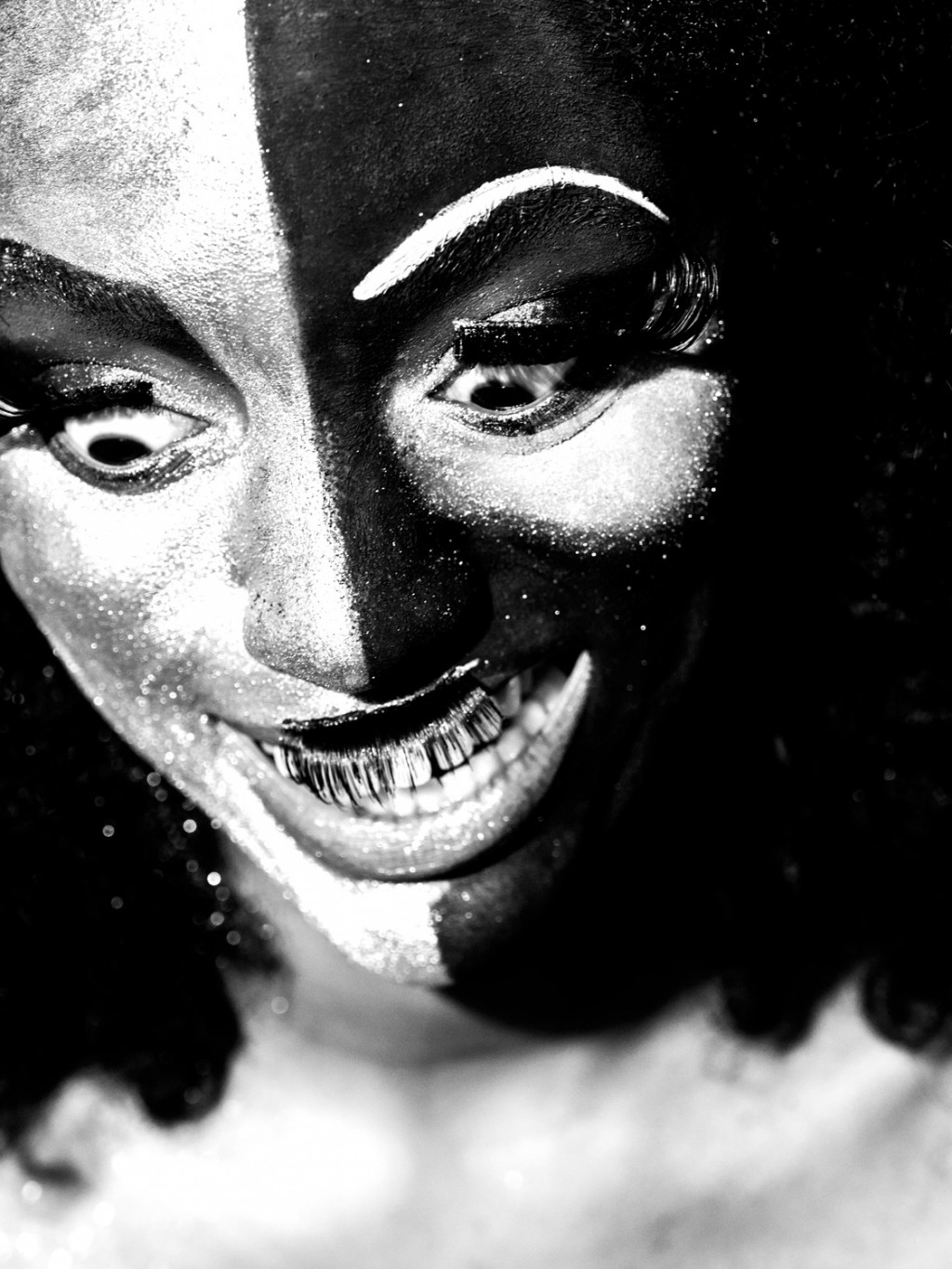
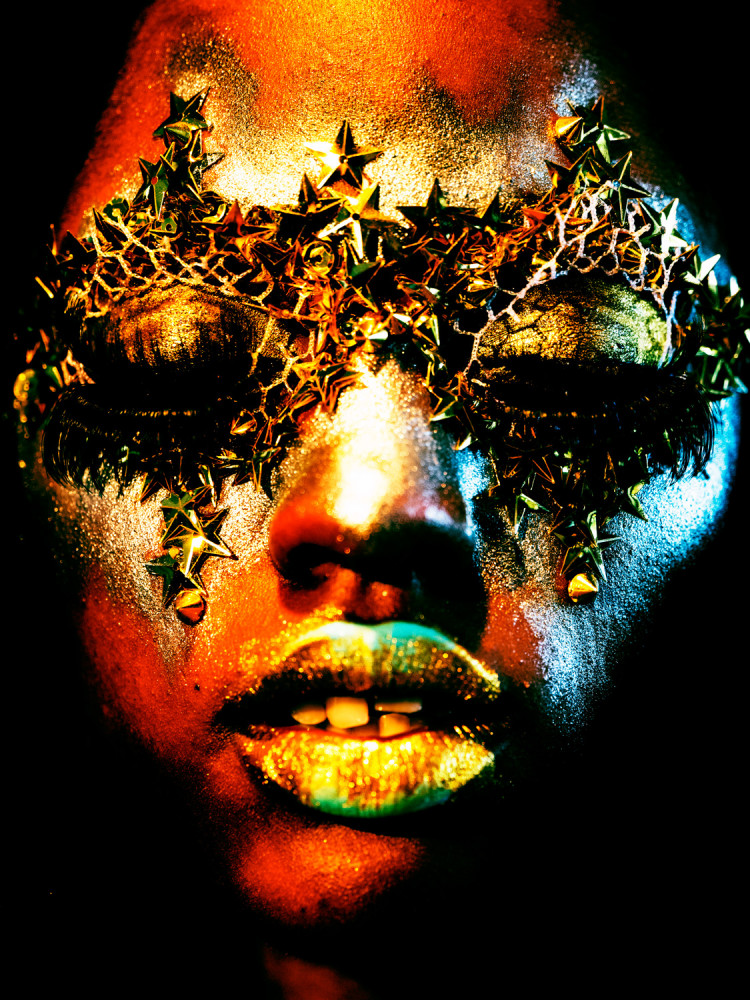
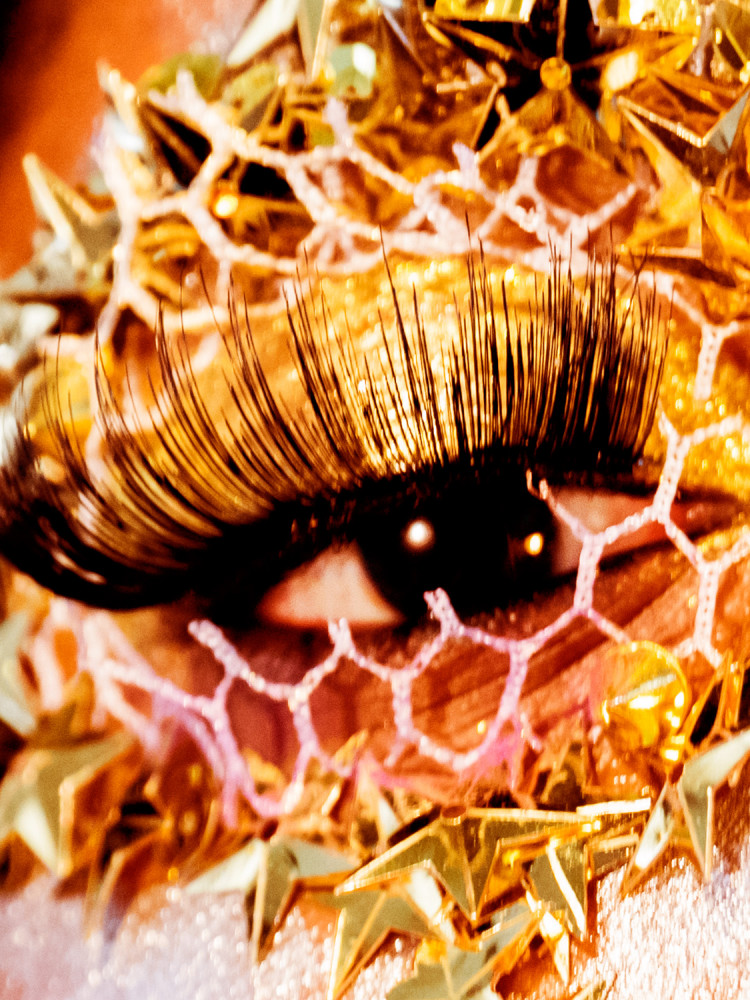
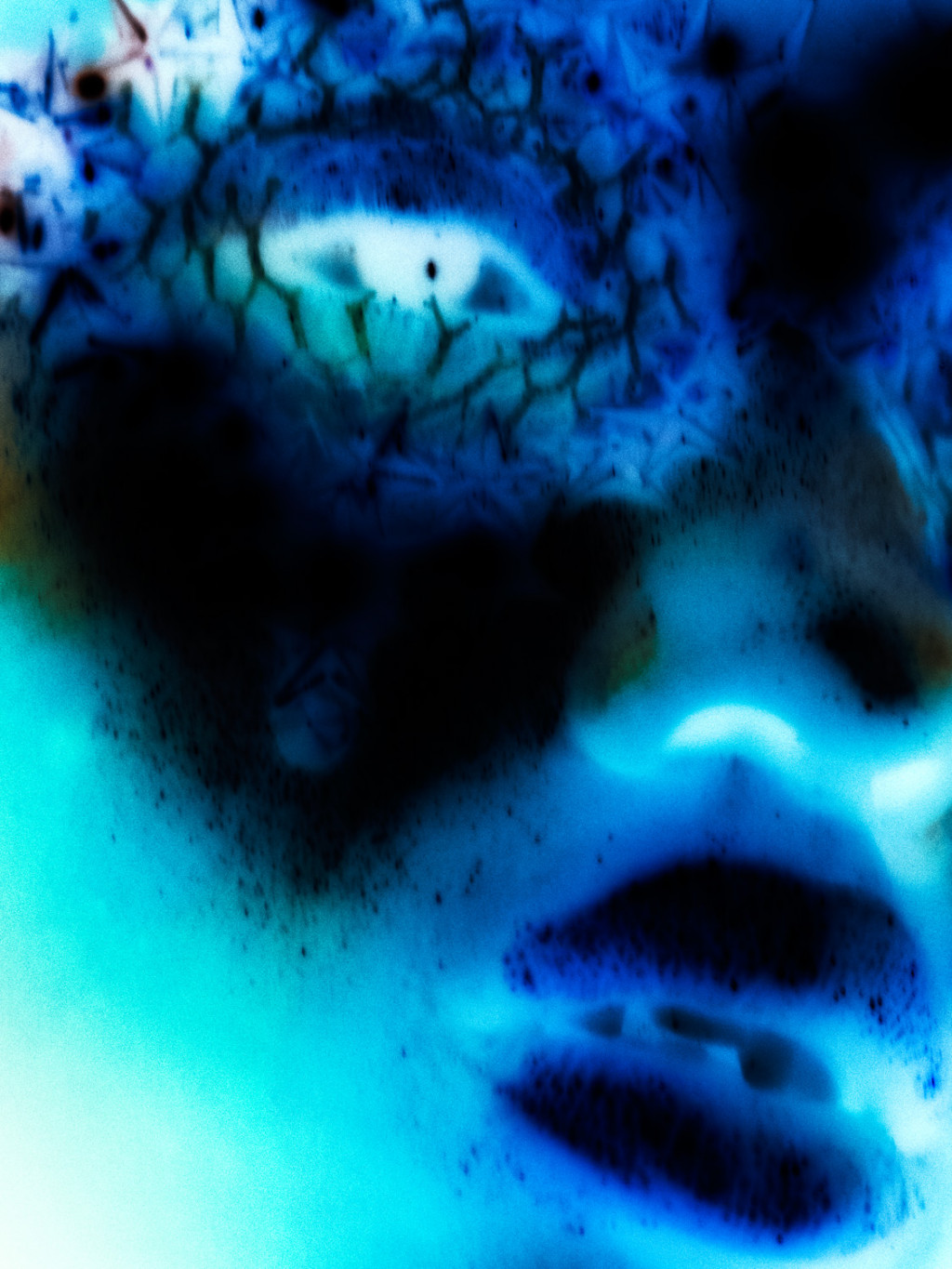
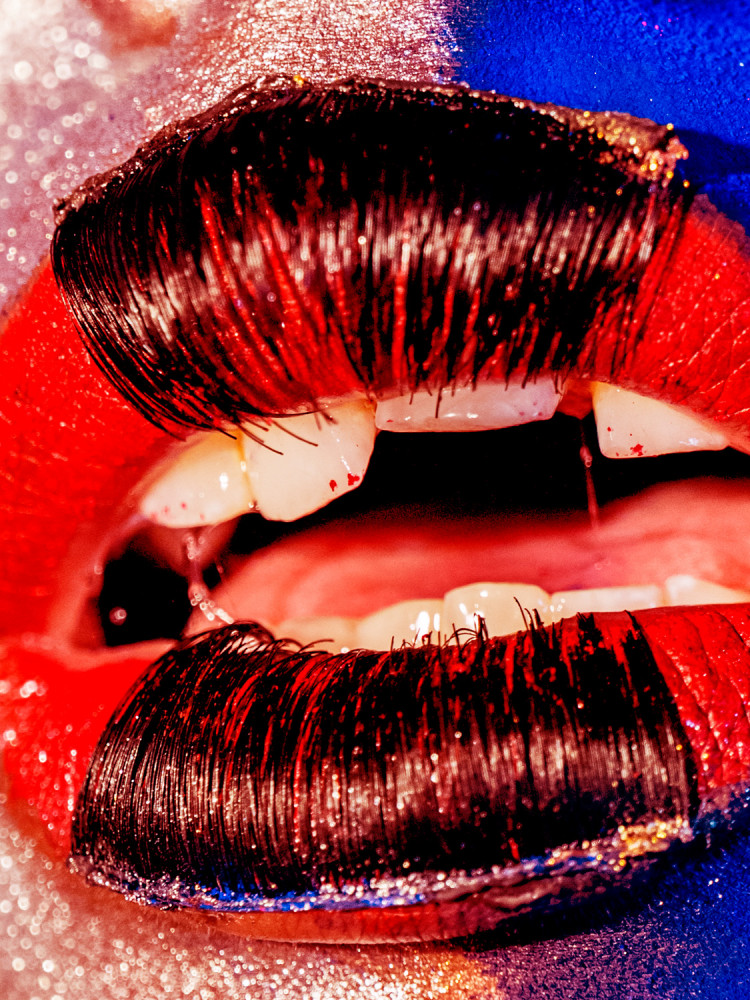
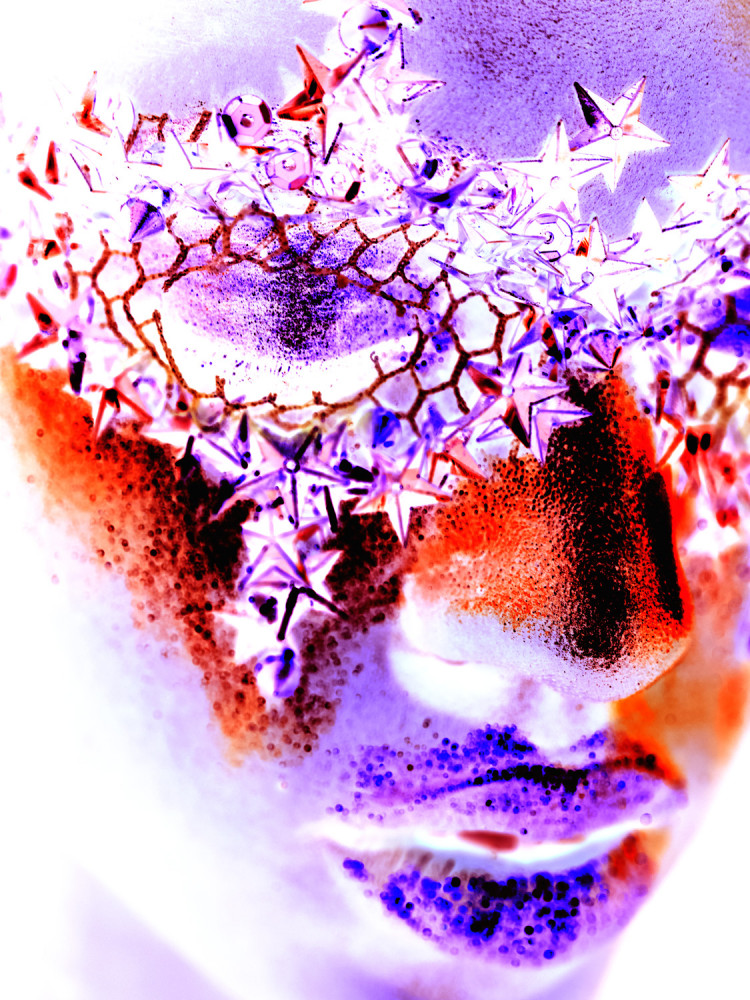
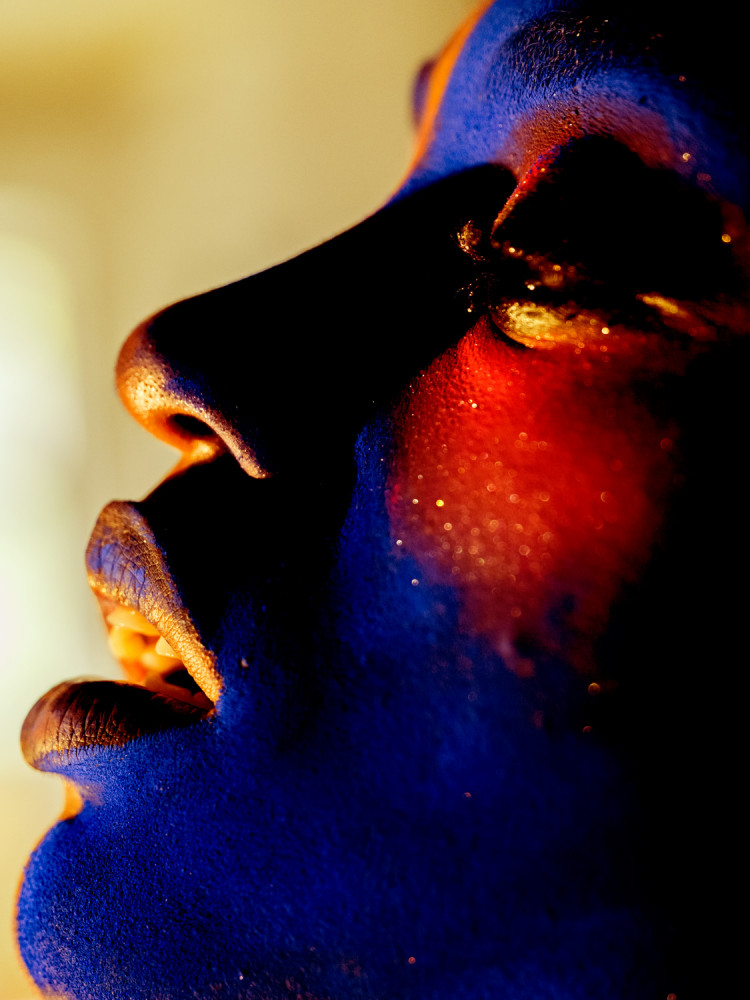
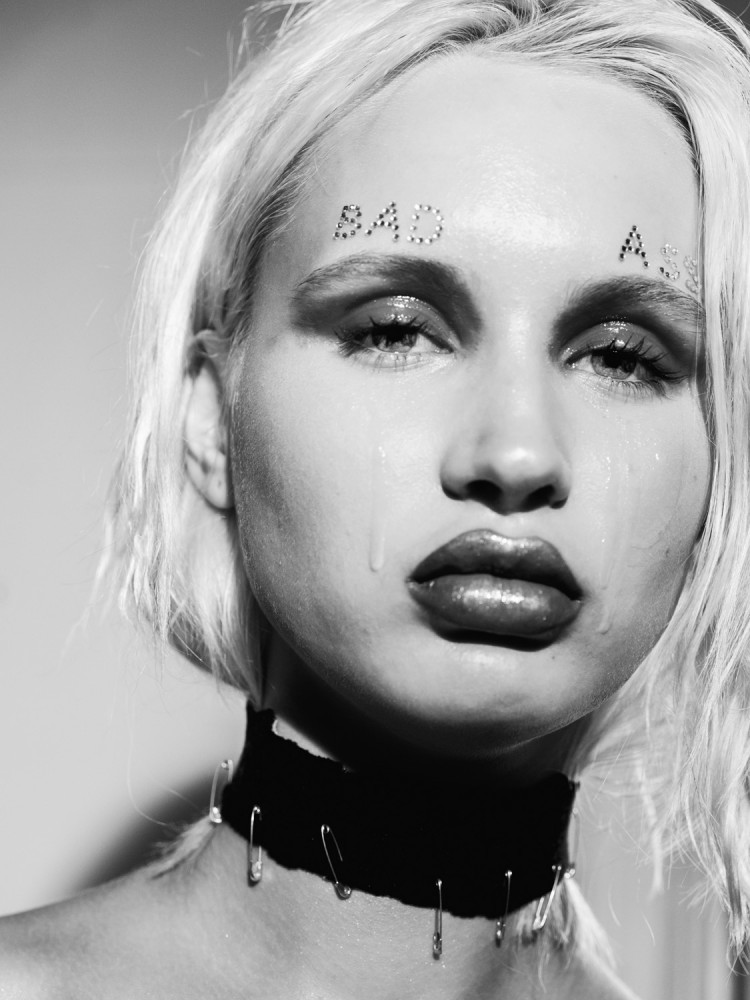
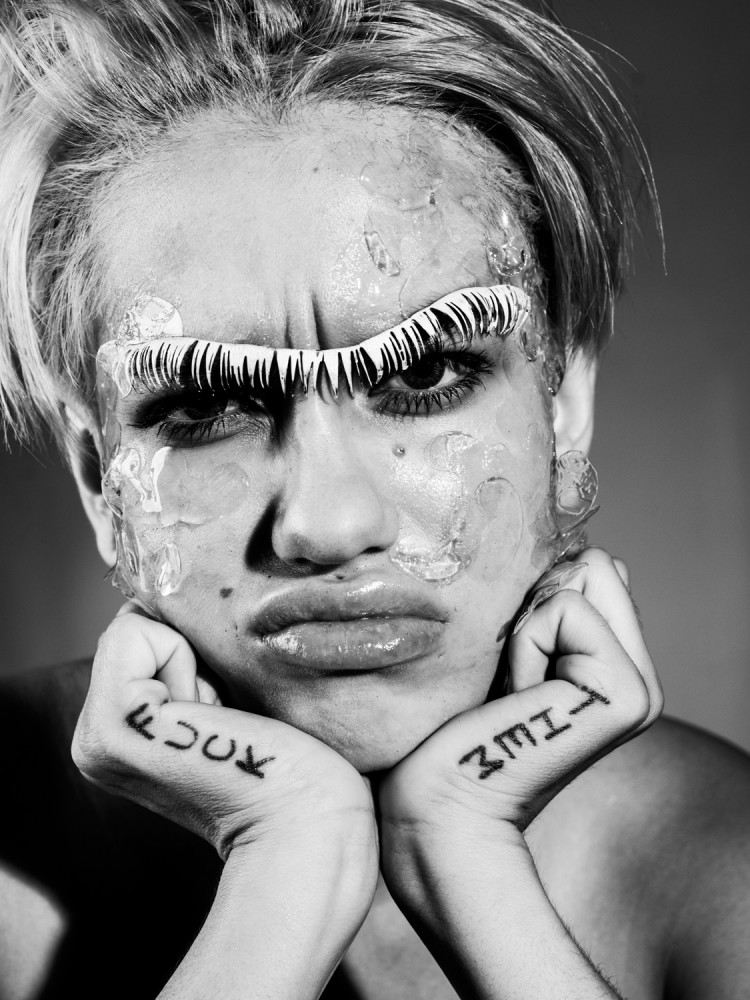
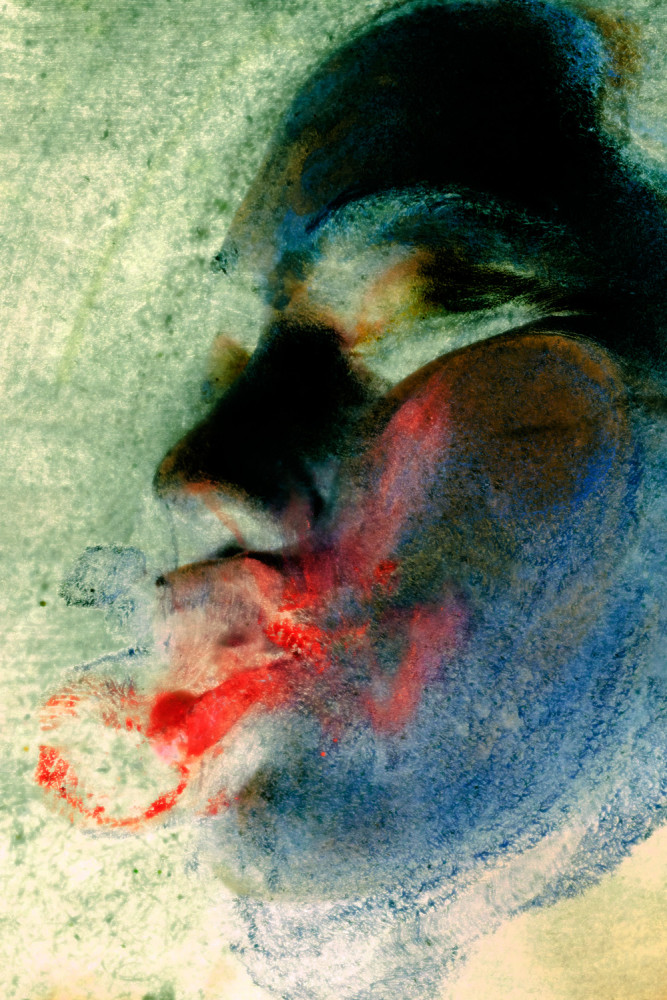
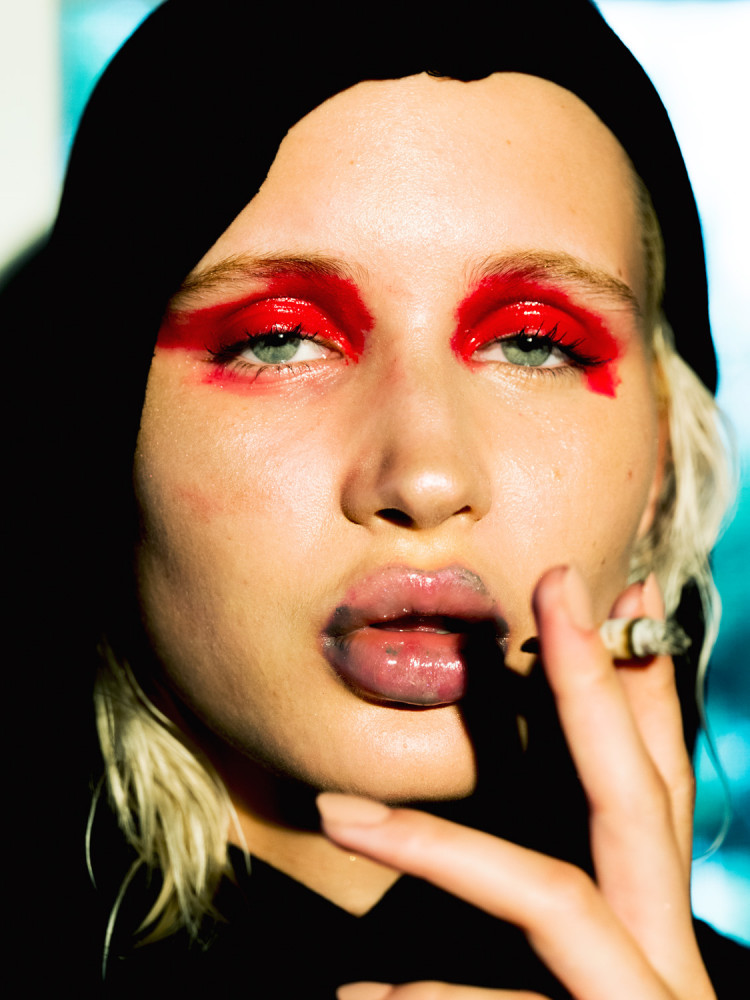
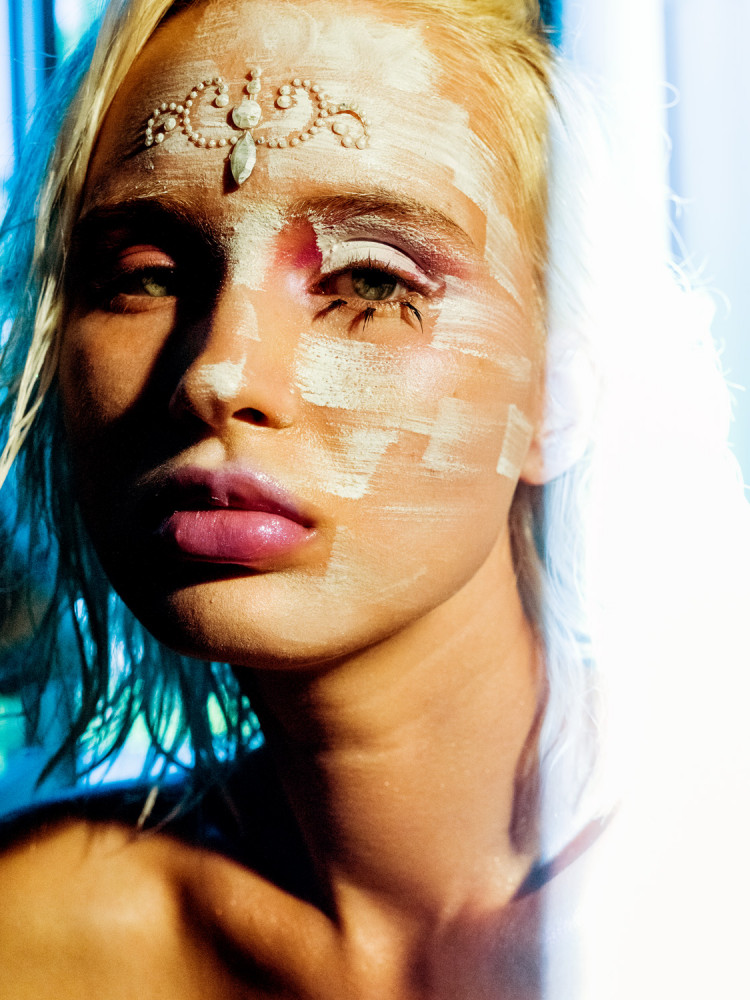
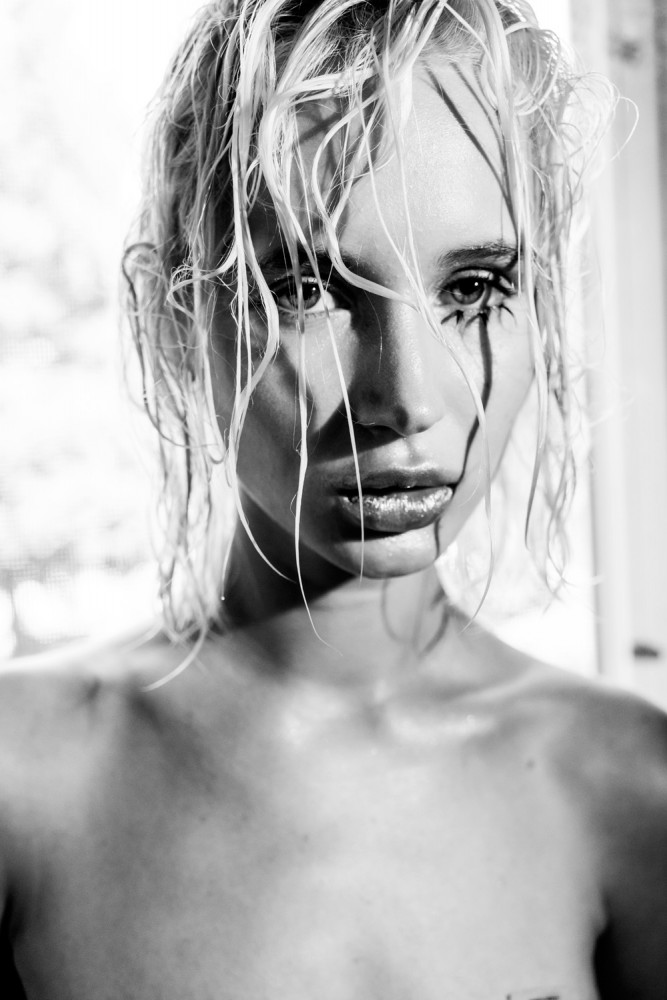
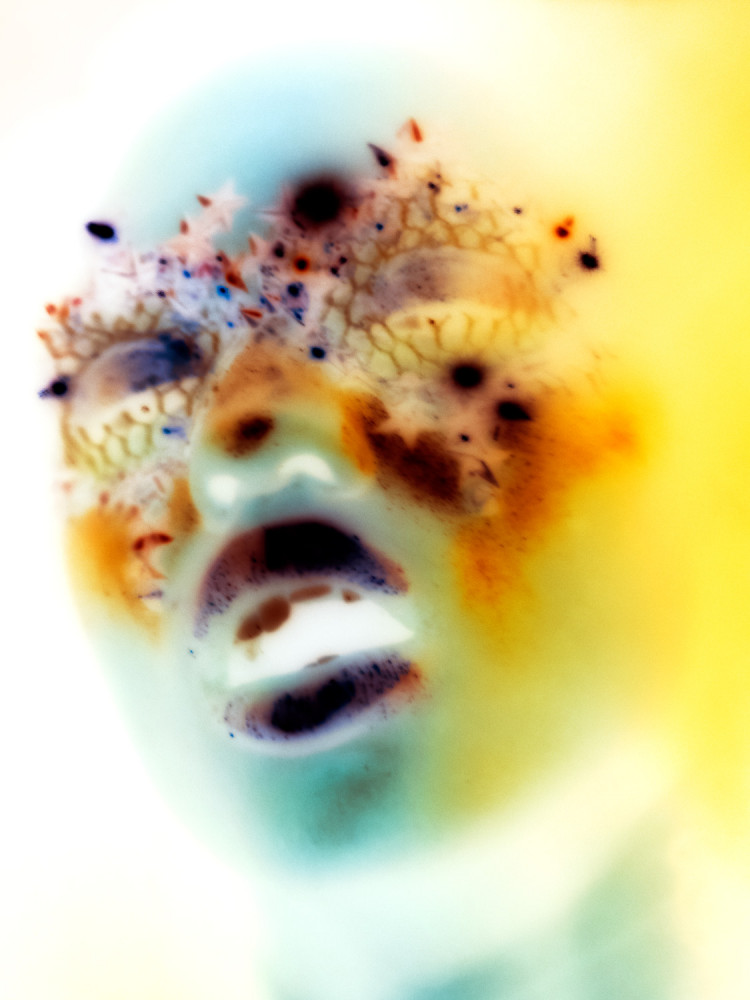
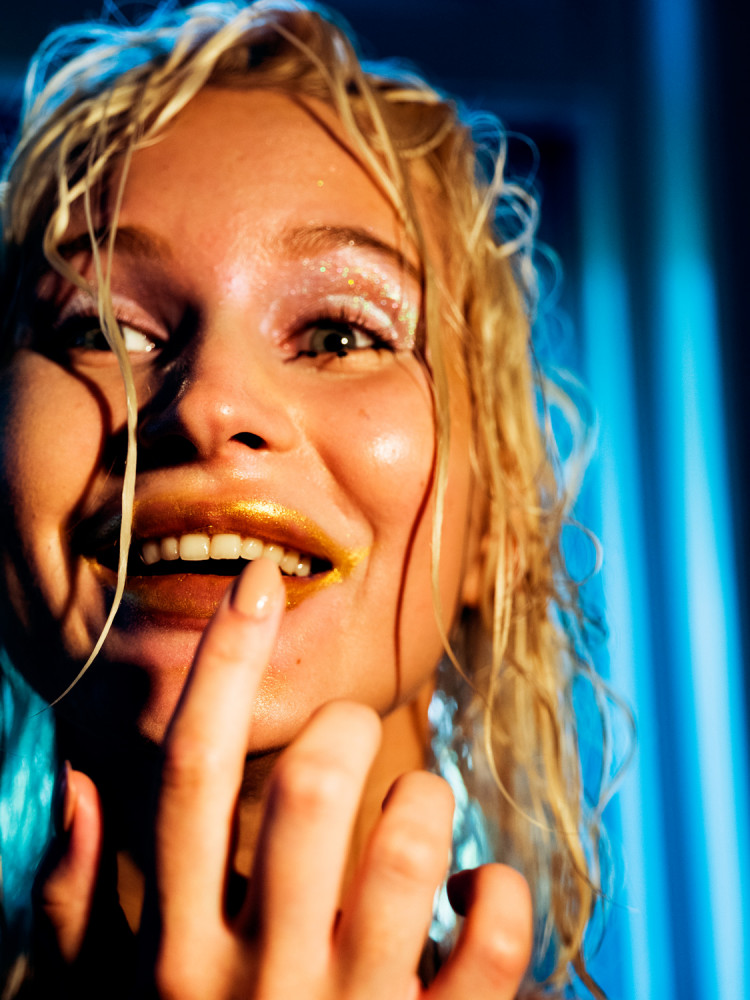
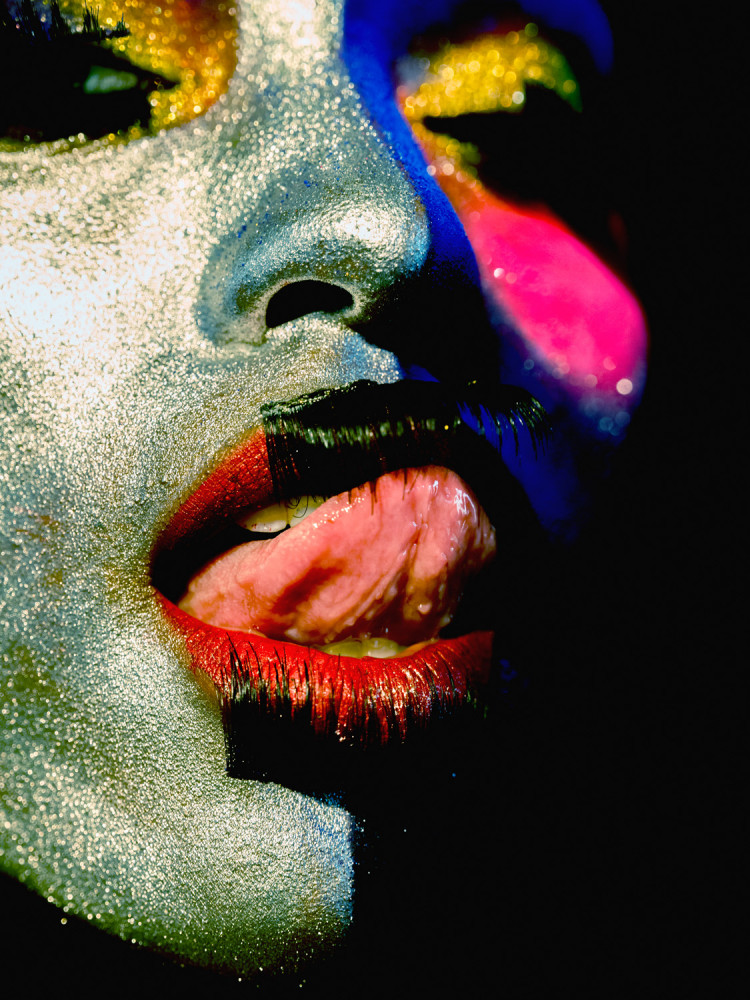

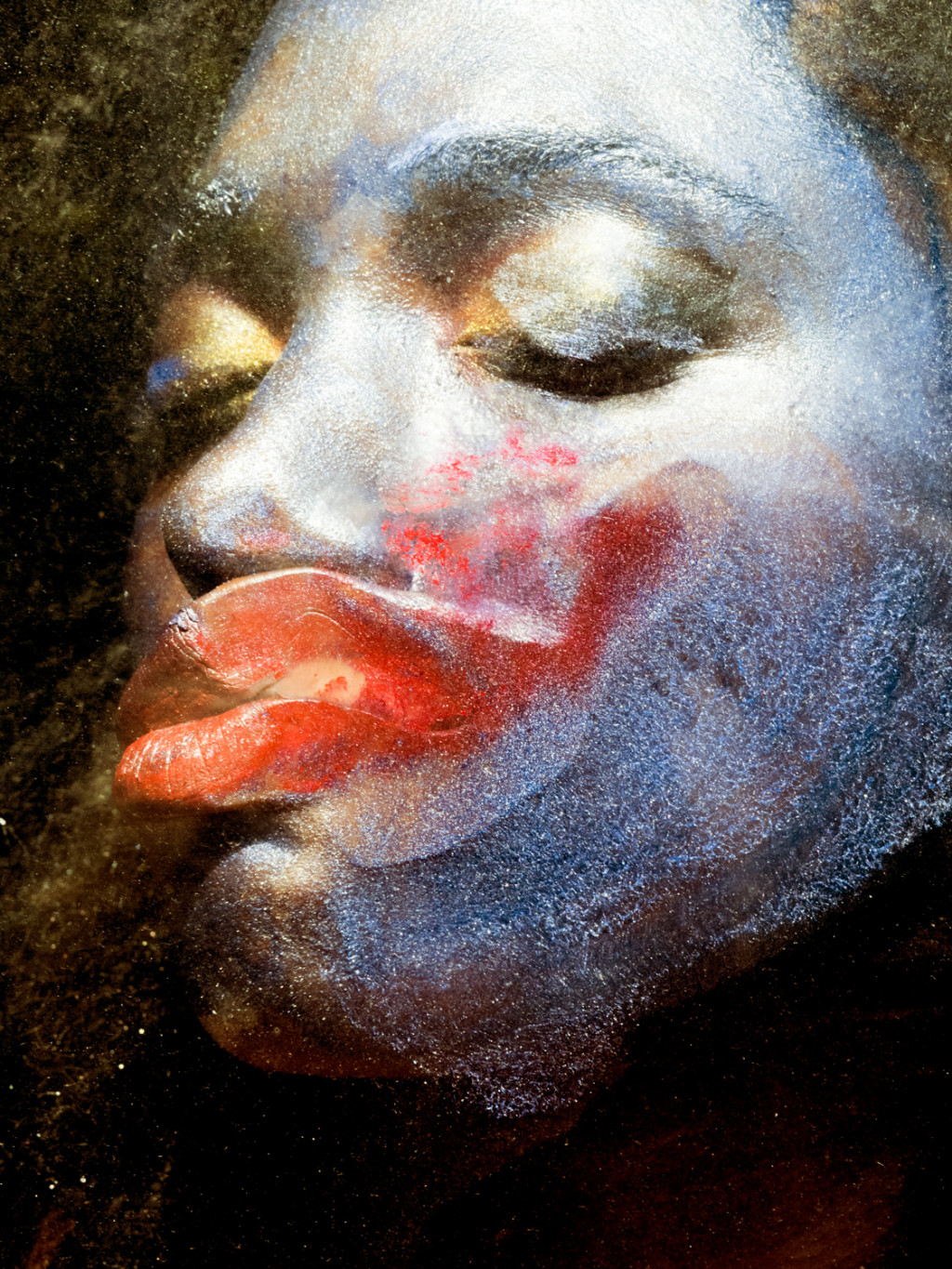
























INTERVIEW
Michael Donovan
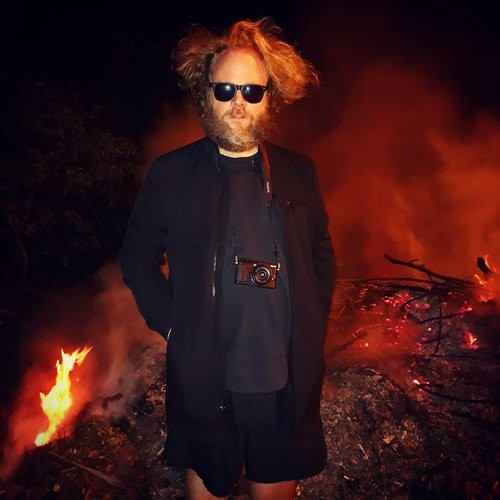
PHOTOGRAPHY Michael Donovan $captionPORIDUCTION$ Taylor Vranish STYLING Raga Closet MAKEUP Yuki Hayashi @ Streeters, Raisa Flowers @ Kreative Kommune, Miraim Robstad @ Bryan Bantry MODELS Gabrielle Richardson @ Muse Models, Apple Drysdale and Milena Garbo @ Silent Models CAMERA Leica SL with Vario-Elmarit-SL 24–90 f/2.8–4 ASPH.
In ‘Face Game’, Michael Donovan is playing with satirical elements, exposing social dissonance in a uniquely unconventional and provocative manner, which is typical for his photography.
Your photography seem unconventional and provocative, subversive and sexually loaded. Rankin’s Hunger magazine calls it “anarchist glamour“. How do you see it? Did you always work like this? Where will it all end?
This style appeared in my work pretty quickly. I did stand-up comedy briefly before turning to professional photography, and culture/social criticism has always been a part of my thought process. I brought that biting comedic element to the images because images travel faster and louder than a live performance. It’s now in my blood to call out the awkwardness of society, and to some that comes across as anarchist behaviour. Our culture’s view of glamour still seems very odd to me. I can’t predict where it will end though - only time will tell!
What are the themes that drive you? What do you want to convey with your photography?
My two greatest themes involve the greatest bookends of life: sex and death. These are the two aspects of life that living people cannot avoid. They create the most basic motivators of fear and inspiration. I don’t think much about these when I’m shooting or conceptualizing, but I do like to balance the light with the dark in odd ways. Overall that conveys something
emotional and deeper in a lot of my work, and I hope it encourages people to think more about the yin and yang in their lives.
Is what we see conceptual or is it mostly subject to chance and spontaneity?
I have one body of work that is almost all spontaneous with some contrived elements, and another that is built on work that is more conceptual but still relies heavily on spontaneity. Ultimately, I like to see people reacting to their lives; and documenting that through photos is a blessing. So there is no real way to say whether anyone is seeing the concept or the spontaneity - the lines are too blurred.
Your photography gets compared to Chris von Wangenheim’s work in the seventies. Do you find the comparison valid?
It’s definitely valid for a portion of my work! To be honest, I didn’t know his work until after I heard the comparison and I had to look him up. I’ve been compared to Wangenheim, Newton, Steven Klein, Bourdin, and a bunch of others who enjoyed combining tragedy and glamour through simple images. However, I’ve moved away from the tropes they use (red lipsticks, great hair, etc…) and am redefining glamour and tragedy in my own way.
You photographed ‘Face game’, a beauty and portrait series, for the S magazine. What’s it about?
This series was shot after a brief break and it was about exploring people who live between the internet and NYC’s youth culture. They live in a world that is beyond my comprehension, and I wanted to connect with each of them and understand how they view the world. The photos were an excuse to sit them down and ask questions while they sat in a make-up chair.
I learned a lot about how they view the world, images, culture, and living in a mash up society. The images were a dance between the world they see, and the world that is being pushed on them.
For sure, the beauty effect in this series is not due exclusively to the elaborate make-up. What other elements, such as the movement, play a role?
Movement, expression, emotions, and experience are important elements of the work. I want the models and subjects to find something new within themselves and grow from the experience. Capturing that “new thing” is what brings me excitement.
Even though you virtually only see faces in the photos, there is an incredible amount of dynamics and expression. Can you share some thoughts on this?
I feel the world needs to document more expressions and emotions, even if the person is covered in make-up. Ultimately, when people dig up photos from our generation, I would like people to see that people experienced a range of emotions beyond “happy, sad, and bored”. Let’s show the people of the future that people had twisted and unusual thoughts and
feelings, you know?!
You took the pictures with a Leica SL, even though the S was also at your disposal. What was it that favoured this model?
A few things! I like to move around a lot while I shoot. I’m literally rolling around on the floor for some of the images. The SL gave me freedom to move freely. My eyes are not excellent, so the AF was very helpful, and it’s great how it’s able to handle low light when I was just using ambient light. I also love the ruggedness of the cameras while I was shooting outdoors - it
creates a sense of security.